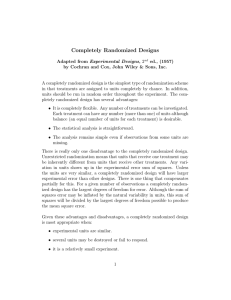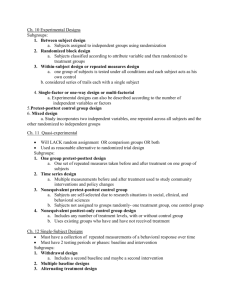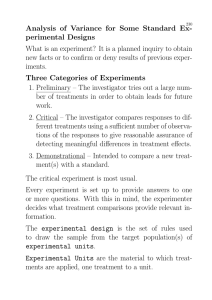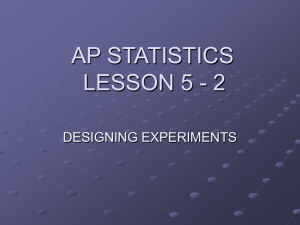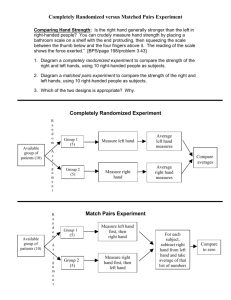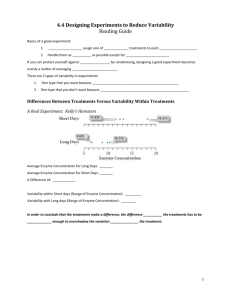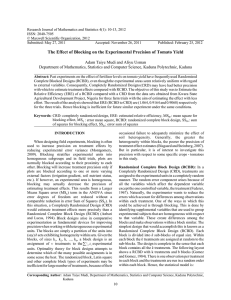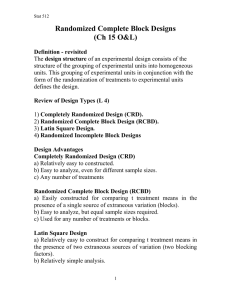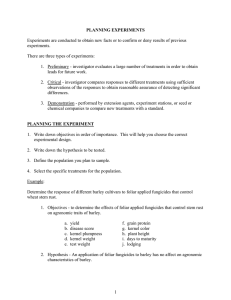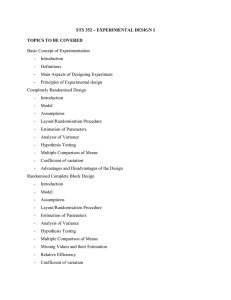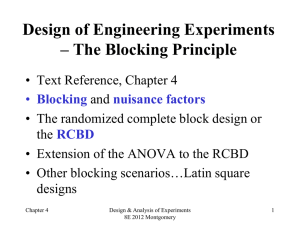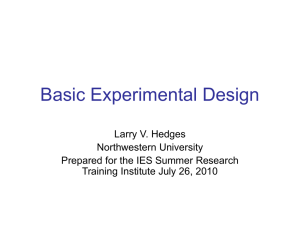Randomized Complete Block Designs
advertisement
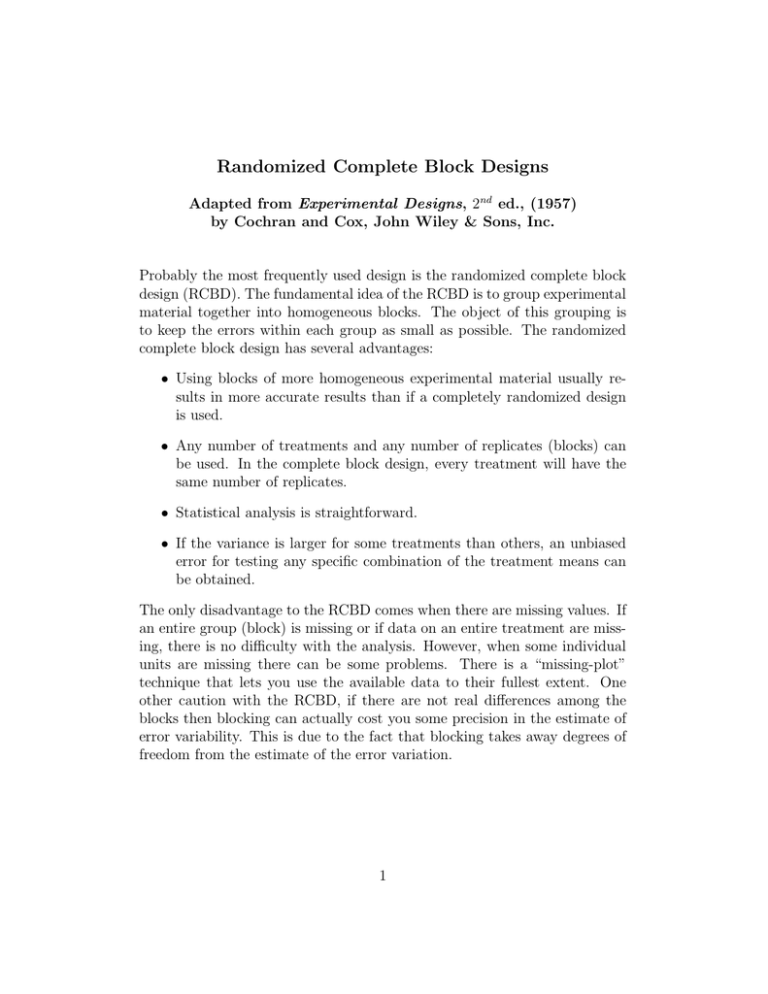
Randomized Complete Block Designs Adapted from Experimental Designs, 2nd ed., (1957) by Cochran and Cox, John Wiley & Sons, Inc. Probably the most frequently used design is the randomized complete block design (RCBD). The fundamental idea of the RCBD is to group experimental material together into homogeneous blocks. The object of this grouping is to keep the errors within each group as small as possible. The randomized complete block design has several advantages: • Using blocks of more homogeneous experimental material usually results in more accurate results than if a completely randomized design is used. • Any number of treatments and any number of replicates (blocks) can be used. In the complete block design, every treatment will have the same number of replicates. • Statistical analysis is straightforward. • If the variance is larger for some treatments than others, an unbiased error for testing any specific combination of the treatment means can be obtained. The only disadvantage to the RCBD comes when there are missing values. If an entire group (block) is missing or if data on an entire treatment are missing, there is no difficulty with the analysis. However, when some individual units are missing there can be some problems. There is a “missing-plot” technique that lets you use the available data to their fullest extent. One other caution with the RCBD, if there are not real differences among the blocks then blocking can actually cost you some precision in the estimate of error variability. This is due to the fact that blocking takes away degrees of freedom from the estimate of the error variation. 1
